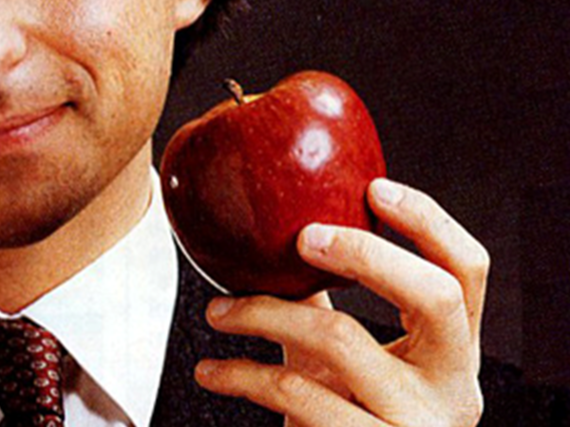It's shocking to think that 70 percent of us are disengaged in our work (according to Gallup). In a world where we have the ability to do so much more than in decades before (Internet, smart devices, etc.), shouldn't we be fully present all the time?
Often it's the big questions that get us thinking, like when I woke up in the middle of the night years ago with Steve Jobs' words echoing in my head: "... or do you want to come with me and change the world?" I remember answering that question well at age 19 when I served a full-time, two-year volunteer mission in Peru, but the question was about right now.
How did Steve Jobs' words get in my head anyway? Maybe it was the story I heard of his early days using those words to challenge Pepsi Executive John Sculley to become the CEO of the then-small, start-up Apple. Or maybe it was an experience I had with Steve Jobs myself. Many people have had special experiences with Steve Jobs, but my one and only in-person experience with the man, the myth, and the legend was different. I never spoke or actually heard a single word from him. I just observed. I was touring Apple on a bright spring day with some fellow MBA students. And we thought we knew a lot about transforming the business world. Little did we know we were about to get a subtle, powerful lesson from Mr. Innovation himself. Having visited other high-tech companies including Google, Cisco and HP, we knew that on any given day you shouldn't expect to see a CEO anywhere outside of big meetings, press events or the C-suite offices.
As we walked through the glass doors at Apple, we marveled at the architecture, design and engineers (especially one wearing a William Wallace-like kilt). We sat through a presentation about the company that provided no surprises. Apple is innovative. We love design. We think differently. Blah, blah, blah... But we weren't prepared for what happened next. We headed to lunch at the cafeteria, experiencing the gourmet wonders from an on-site chef. After we finished eating, we walked toward the door as a group, and then one of the MBA students spotted Steve Jobs. We saw him sitting with a coworker, engaged in real-time ideation.
Steve was engrossed in the conversation, fully present and authentically listening to the Apple employee. By the look in his eyes, you could tell Steve wasn't just working, he was sharing, connecting, and it was as if he was totally engrossed in... changing the world. Right there, in that conversation. But there was no fanfare, no cameras, only us, observing him in his natural habitat -- like a bald eagle that you happen upon now within touching distance, but are cautious not to disturb in the slightest. And Steve was completely unaware of us. That is, until an outspoken MBA student pointed and shouted, "There's Steve Jobs! Right there!" Awkward. Steve looked up, stared at us for a second, and then went back to his conversation. But our guide, an Apple senior manager whose eyes suddenly bulged, quickly ushered us out of the cafeteria, muttering something about us please not doing that ever, ever again.
Here's what I learned: Despite what Peter Drucker fans might suggest, Steve Jobs, the modern king of innovation, had evolved beyond just being a Knowledge Worker -- he had become a Connection Worker. From the beginning, Steve wanted people to "Come with [him] and change the world." He didn't want to do it alone, and knew he couldn't. Steve Jobs was ultimately a team player, not a standalone superhero. He was deeply connected to an inspiring vision he constantly shared, and then creatively connected with others to achieve. Did he demand excellence? Yes. Some might say too much. But Steve wasn't in it for himself. He focused on sharing the highest quality products with others, to make their lives better. He cared about the experience that people throughout the world -- millions he would inevitably never meet in person -- would have becoming more productive through his inventions. Steve Jobs fostered creativity and innovation. Granted, not all of us are Steve Jobs, but all of us can become the world-changing version of us. As leaders, we may wonder how we could ever measure up. Here are some ideas for us to start getting there:
•Unleash the Power of Responsibility. Embrace responsibility because there's power in it. Don't blame circumstances on predecessors or anyone else. Marianne Williamson once said, "The revolution that will save the world is ultimately a personal one."
•Make Service the Go-To Strategy. Don't think less of yourself, just think less about yourself. Don't black-hole efforts by becoming corrupted, forgetting your calling, or falling prey to self-interests. Get immersed in service. Lose yourself in it.
•Innovate With Everyone. Abraham Lincoln offered this wisdom, "As our cause is new, we must think and act anew." Lincoln regularly made it a practice to work with people who disagreed with him, and to ask them to share, and integrate their thinking with his into something bigger that would benefit more people. In the Integration Age, the ability to converge diverse opinions to create innovation will take courage, but can also lead to the greatest gains in world history.
•Empathize, Empathize, Empathize. Empathy is the fuel that drives things forward. It enables engagement and empowerment. It's a game changer.
You don't have to be Steve Jobs to change the world, just be your best self. And boldly power through whatever's holding you back to make it happen.
Image credit: Apple
Cross-posted from LinkedIn.
Follow Chris Deaver on Twitter: www.twitter.com/@CDeaver7
